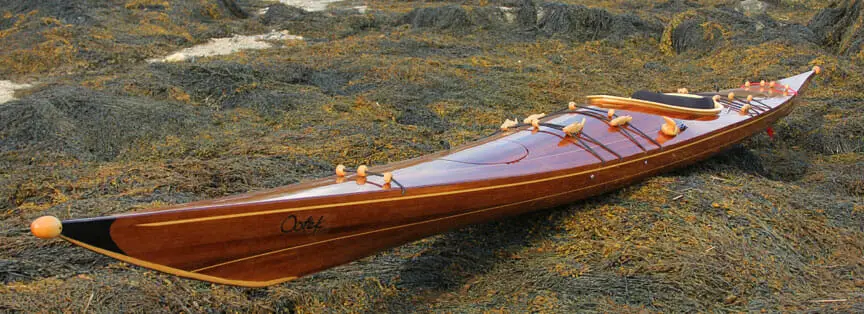Sanding A Strip Built Sea Kayak

Sanding a Strip-Built Sea Kayak
 Sanding is one of those jobs that’s required for building a strip-built sea kayak, but it’s also most builder’s least-favorite activity. Sanding is just plain hard work, after all, and can seem like an endless task, especially at the beginning of a project. But don’t despair – there are some tricks to minimizing the amount of sanding required to build a good stripper, and you won’t wear your arm out in the process.
Sanding is one of those jobs that’s required for building a strip-built sea kayak, but it’s also most builder’s least-favorite activity. Sanding is just plain hard work, after all, and can seem like an endless task, especially at the beginning of a project. But don’t despair – there are some tricks to minimizing the amount of sanding required to build a good stripper, and you won’t wear your arm out in the process.
If you expect your strip-built kayak to have a fantastic finish, you will have to do quite a bit of sanding. But if you prepare the boat properly before hand, you can cut down on the amount of sanding. The first step is to do much of your fairing work with a plane. This is a very handy tool for shaving off layers of wood, and you can use it to remove the rough spots and angles created by the joints between each of the boat’s strips.
Next you’ll want to find a good fairing sander to remove any high spots on the boat’s hull. Just remember that proper fairing requires that you focus on the entire boat, and not just one area. If you spend too much time in one area, you could end up with a low spot that will be a real problem down the road. With the fairing sander, start out with a course grade of sandpaper, and make sure to move the sander parallel to the strips you’re sanding. This will hopefully minimize the amount of scratches that you’ll have to deal with later, when you apply the epoxy.
One trick for finding uneven areas of your boat is to run your hand down its length, hunting for high and low spots. When you find a high spot, use your plane to shave it down. Low spots can be filled and sanded later. And if you find gaps between the planking strips, you can fill them as well.
If you come across a defect that requires deep sanding, you can either fill it in (if it’s relatively small), or you can sand or plane down the surrounding area down to until the defect is worked out.
Now, once you’ve done this prep work, it’s time to start in with the sandpaper. Using 60 or 80 grit sandpaper, sand down the entire boat, again looking for uneven areas. It’s best to work in long strokes, moving the paper smoothly and rapidly, working your way down the length of the boat. Once you’ve completed one region, move onto the next, making sure you overlap so there are no unsanded areas. Once the kayak has a uniform surface, you can clean by vacuuming or wiping it down with a damp cloth.
Once the wood has dried, you should sand it a second time, still using the course sandpaper. Usually this will be all the sanding required for a great finished product. You’re basically prepping the wood so that the epoxy will have a good bond. It’s the epoxy that will give your strip built sea kayak a smooth, glass-like finish.
[box]
Return from Sanding A Kayak to Building A Kayak Home
Return from Sanding A Kayak to Kayaking Journal Home Page
[/box]

